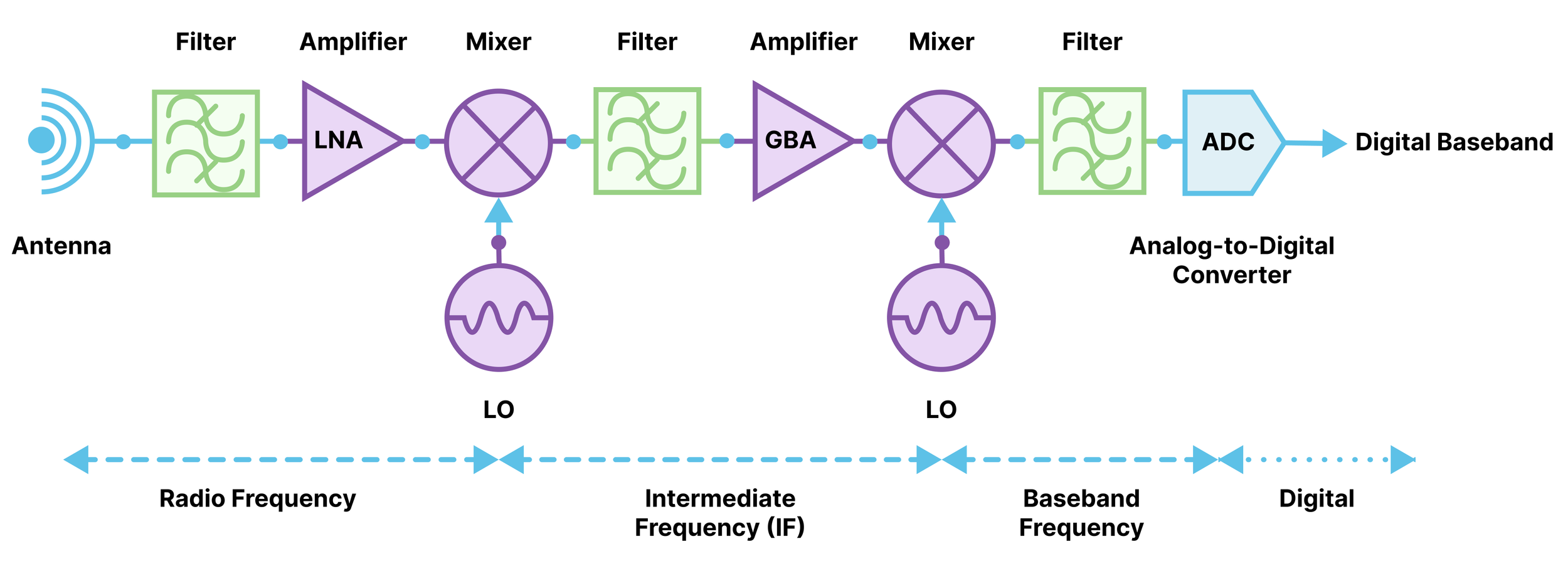Interplanetary Internet
Project Overview
UI/UX, Product Design
Interplanetary Internet is a cutting-edge platform that encompasses optical deep space communications, data management, and space traffic control capabilities. Its purpose is to revolutionize the way we communicate and manage data in deep space. With a focus on high availability and high bandwidth communications, this advanced system aims to overcome the limitations of traditional radio frequency-based communication methods. By leveraging optical technology, the Interplanetary Internet offers the potential for significantly faster and more efficient data transmission over long distances, enabling seamless and reliable communication between Earth and deep space missions.
Intent
Create an advanced communication system with the Hypergiant R&D team. The main goal is to replace the current radio frequency deep space communications system known as the Deep Space Network (DSN) by NASA. DSN faces challenges with its aging infrastructure, escalating maintenance expenses, and inability to keep up with the evolving demands of contemporary missions.
My Roles
UI/UX Design
Product Design
Pitch Design
Background
The Interplanetary Internet project was an exploratory collaboration with the Hypergiant R&D team. Our goal was to investigate methods for enhancing interplanetary communications.
Here are some of my responsibilities for this project listed below:
UI/UX Development: Crafting user-friendly interfaces that prioritize functionality and aesthetics.
Prototyping and Wireframing. Crafted low and hi-fi wireframes and prototypes, iterating designs based on feedback, and ensuring a seamless user experience across digital platforms.
Team Communication: Developed pitch decks to present the project to stakeholders as well as team members.
Asset Management: Organizing and optimizing digital assets such as images, videos, and documents for efficient retrieval and use. Incorporating established components from the asset library and developing new designs inspired by existing ones to maintain consistency and cohesion.
Research
Here are some existing tools that are being explored currently in terms of space travel and interplanetary communications.
Interplanetary Internet Protocol (IPN): NASA and other space agencies have been working on developing protocols similar to the Internet Protocol (IP) for communication between spacecraft and potential future settlements on other planets. This involves creating networks that can handle the significant distances and communication delays involved in interplanetary communication.
Satellite Networks: Companies like SpaceX with their Starlink project are aiming to create large satellite networks around Earth to provide global internet coverage. It is possible that similar networks could be established around other planets or in space to facilitate communication between spacecraft, bases, and colonies.
Data Transfer and Storage: Efficient data transfer and storage methods are crucial for space missions. This includes developing compact, reliable storage systems that can withstand space conditions and designing communication protocols that optimize data transmission over long distances.
Deep Space Network (DSN)
The most prominent project in terms of space communication currently is NASA’s Deep Space Network (NSN). The primary purpose of the Deep Space Network is to provide communication and tracking services to spacecraft exploring beyond low Earth orbit. This includes missions to other planets, moons, asteroids, and interstellar space.
The Deep Space Network (DSN) comprises three strategically located deep-space communications complexes worldwide: Goldstone in California (USA), Madrid in Spain, and Canberra in Australia. These sites ensure continuous communication by compensating for Earth's rotation. With a range of antennas, including large 70-meter ones and smaller 34-meter and 26-meter antennas operating in various frequency bands, the DSN communicates with spacecraft across vast distances, from near-Earth missions to those billions of kilometers away. Beyond communication, it provides precise tracking, navigation, and scientific research support, including radio astronomy observations. Collaborations with international space agencies like ESA further enhance the DSN's capabilities, making it integral to NASA's deep space exploration, facilitating successful missions, and gathering critical scientific insights from distant celestial bodies.
Delivery Process
User Problems
Challenge 1
Limited Bandwidth: The available bandwidth for communication with multiple spacecraft simultaneously is finite. Managing and optimizing bandwidth allocation to meet the diverse needs of different missions can be a complex task.
RF systems face several challenges that impact their performance and reliability. They are susceptible to interference from various sources like electronic devices, atmospheric conditions, and physical obstacles, leading to degraded signal quality and reliability. Additionally, RF communication operates within specific frequency bands, resulting in limited available bandwidth, which can affect data transmission speed and efficiency. Signal degradation over long distances, coupled with security risks such as interception by unauthorized parties, further complicates the use of RF systems, especially in sensitive data transmission scenarios.
“ As Humanity becomes an interplanetary species, the Interplanetary Internet will be there to support its ever-changing communication needs.”
Challenge 2
Communication Delays: Delays can be caused by slow data transfer speeds and the sheer distance involved in deep space missions, which can be especially frustrating. While the DSN can transmit data across long distances, the speed of data transfer is limited compared to terrestrial networks. This limitation can affect the timeliness of receiving and processing large volumes of scientific data from spacecraft. These delays can range from minutes to hours, impacting real-time decision-making and command execution.
Solutions
Optical is the best choice for deep space
The optical subsystems of the Interplanetary Internet possess a significant advantage in terms of bandwidth when compared to RF systems. While RF systems operating at Ka-band frequencies offer a bandwidth of approximately 500 MHz, the optical systems employed by the Interplanetary Internet exhibit a bandwidth that is 1000 times larger. This expansive bandwidth empowers optical systems to transmit a substantially greater amount of information. Additionally, the Interplanetary Internet's optical link demonstrates significantly reduced beam divergence compared to RF systems, resulting in improved signal-to-noise ratios. This enhancement in signal quality enables the utilization of more intricate modulation techniques, thereby facilitating higher throughput. Overall, the Interplanetary Internet leverages its optical subsystems' broad bandwidth and reduced beam divergence to enable the efficient transmission of large volumes of information with enhanced signal quality, paving the way for groundbreaking advancements in deep space communications.

Key Technology Features
-

Link
Reliable link routing and data utilization
-

Network
Network aware constellation management for optimal data traffic control
-

Speed
High-Speed and mass memory onboard data processing
-

Precision
High precision attitude control and orbital positioning

The optical infrastructure of the Interplanetary Internet lowers costs and increases capability
Savings In Mass
Optical transceiver equipment is significantly smaller than radio
Savings In Power
Increased bandwidth allows mission data to be transmitted with shorter contact times, saving onboard spacecraft power
Increase In Data Rate
Increased data rates enable increased data collection and reduced mission operations complexity


















